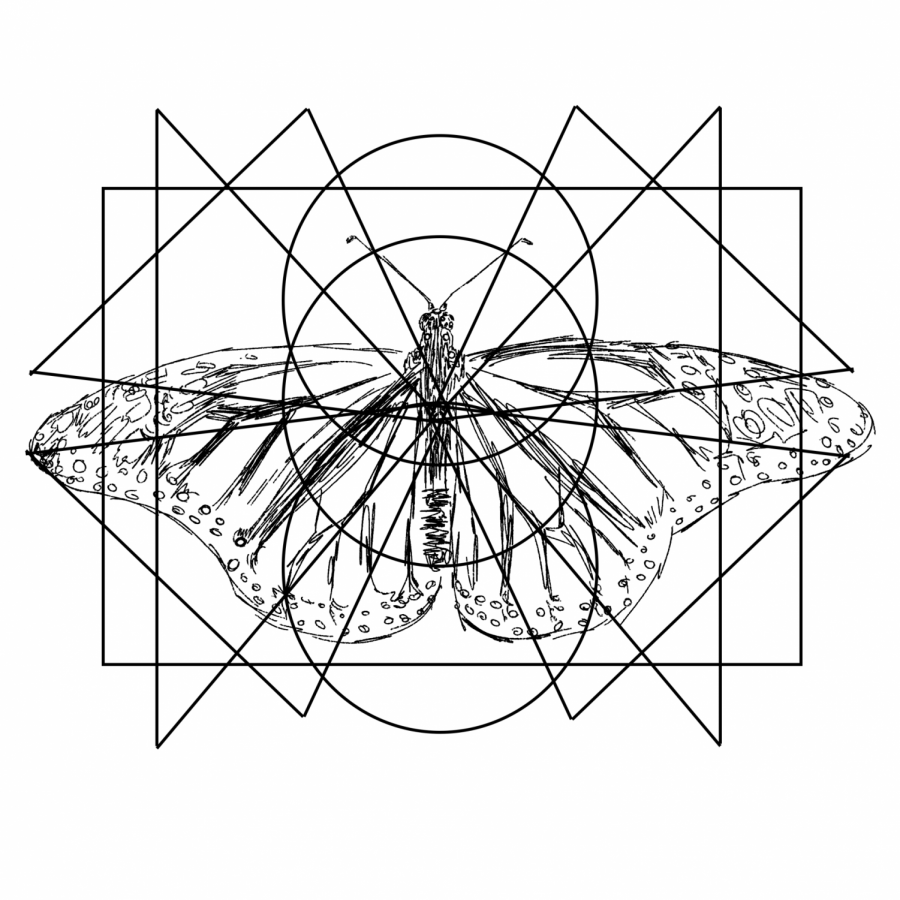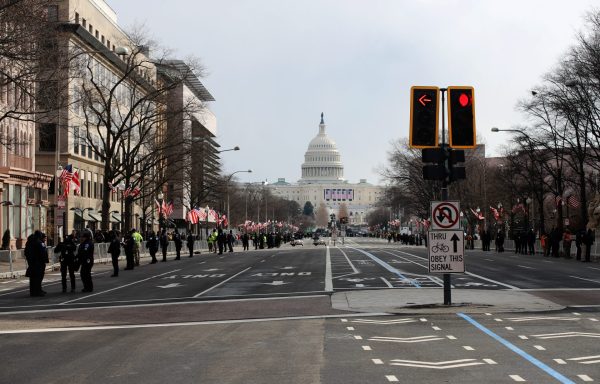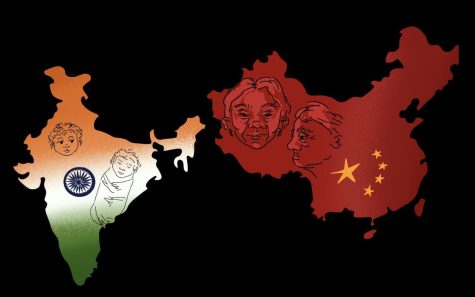Monarch butterflies embark on continent-wide journey yearly
Credit: Alicia Goluszka/The DePaulia
Two little wings flutter north as the monarch continues migration. These tiny, 4-inch-wide insects will make a journey that lasts over 3,000 miles, spanning multiple generations.
The monarch butterfly, scientifically known as Danaus plexippus, is most commonly known for its large, orange wings. There are two different types of monarch butterflies: the western population and the eastern population. The western population migrates from western states to the California coast for the winter months, while the eastern population migrates from Canada to Mexico for the winter. This extensive migration is one factor that makes the monarch butterfly unique compared to other butterflies.
Each year, the eastern monarch butterfly population migrates from Canada down to Mexico, where they will stay from October to March. From there, the butterflies begin a journey back up north, where they will spend the rest of the year. This migration is more than 3,000 miles long, and each migration results in approximately three to four monarch generations before the trip is completed.
In the U.S., monarchs are commonly associated with the warmer spring and summer months. They occupy classrooms nationwide, used as an education tool to complement their status as a summertime icon. However, the monarch holds significance cross-culturally.
“Monarchs are considered important culturally not just in the United States, but in Mexico,” said Tierra Curry, a naturalist for the Center for Biological Diversity. “Here, they are symbols of summertime, but in Mexico they show up for the winter. So, they play a very important role in the culture of Mexico in the winter.”
During their migration pattern, the monarch butterfly arrives in Mexico around the time of Día de Muertos, or Day of the Dead, which is celebrated in the first days of November. It is during this time that many people in the region believe that the monarchs are the souls of loved ones coming to visit.
Each of these generations go through a life cycle similar to those of other butterflies. They begin as eggs which hatch into caterpillars. From there, the butterflies become pupa, in which the caterpillar creates a chrysalis. Out of the chrysalis, a fully formed monarch butterfly will emerge and take flight. A key component to the monarch butterfly’s life cycle is milkweed. This particular plant is essential to the monarch because it is where the female monarch butterflies lay their eggs. The milkweed provides a safe place for the eggs as it is a deterrent to other animals.
However, the beloved monarch butterfly is at risk. Due to urbanization, as well as deforestation, the monarch butterfly population is suffering. The western monarch population has decreased significantly, leaving the population at just under 2,000 monarchs last year, according to Tara Cornelisse, a senior scientist focused on insect conservation at the Center for Biological Diversity. The eastern population has fallen by 85 percent since the mid-1990s.
“Insects, their populations are so cyclical, they go up and down, up and down,” Cornilesse said. “But this is a clear trend where that up and down is going down.”
Another factor that is affected due to human interference: the milkweed. This wildflower is the only host plant for their eggs. It provides food for the caterpillars during the stage of their life when their only job is to eat in order to grow. When areas where milkweed is found is developed and urbanized, it limits where the monarchs can lay their eggs.
There are ways, however, that we can help them. One way is to advocate for butterfly waystations to be created in our neighborhoods. Waystations would provide stopping points for the monarchs to rest and refuel during their long migration. The spaces do not need to be large, and a variety of flowers and milkweed would give them the fuel to continue onward.
Places such as Lake Katherine in Palos Heights, Illinois, are already putting forth effort to conserve the monarch butterfly population. Lake Katherine focuses on education about the monarch butterfly population as well as providing beautiful waste stations throughout the park.
“Educating people is a huge thing,” said Tara Rosenwinkel, an environmental educator and naturalist at Lake Katherine. “Oftentimes people just don’t know what types of things butterflies need and what they do for our environment.”
The city of Palos Heights is also doing its part to help the monarch population with the Mayor’s Monarch Pledge, which supports efforts to aid habitat for monarch butterflies as well as other pollinators.
Closer to DePaul, folks can advocate for open spaces to become waystations for monarch butterflies. On a smaller scale, people can plant small pollinator gardens on apartment balconies. By planting a pot of milkweed, a person can provide a place for monarchs to lay their eggs. Planting brightly colored flowers will attract grown monarch butterflies, giving them access to food so that they may continue their journey, as well as allowing for pollination to occur.
To cater your pollination station to the monarchs, Rosenwinkel suggests planting a type of goldenrod, milkweed and blazing star, all of which provide nectar and habitat for the butterflies. It is also essential that these plants are herbicide and insecticide free.
Although the monarch population is struggling, there are ways in which they can be helped. Taking the time this summer to plant a pollinator garden and giving the monarchs a place to stop along their extensive journey across the continent, is highly beneficial to the population. In addition to this pollination station, simply educating others on the monarch population and their needs can help others get on board for the cause, and hopefully the monarchs’ population will begin to soar once more.







